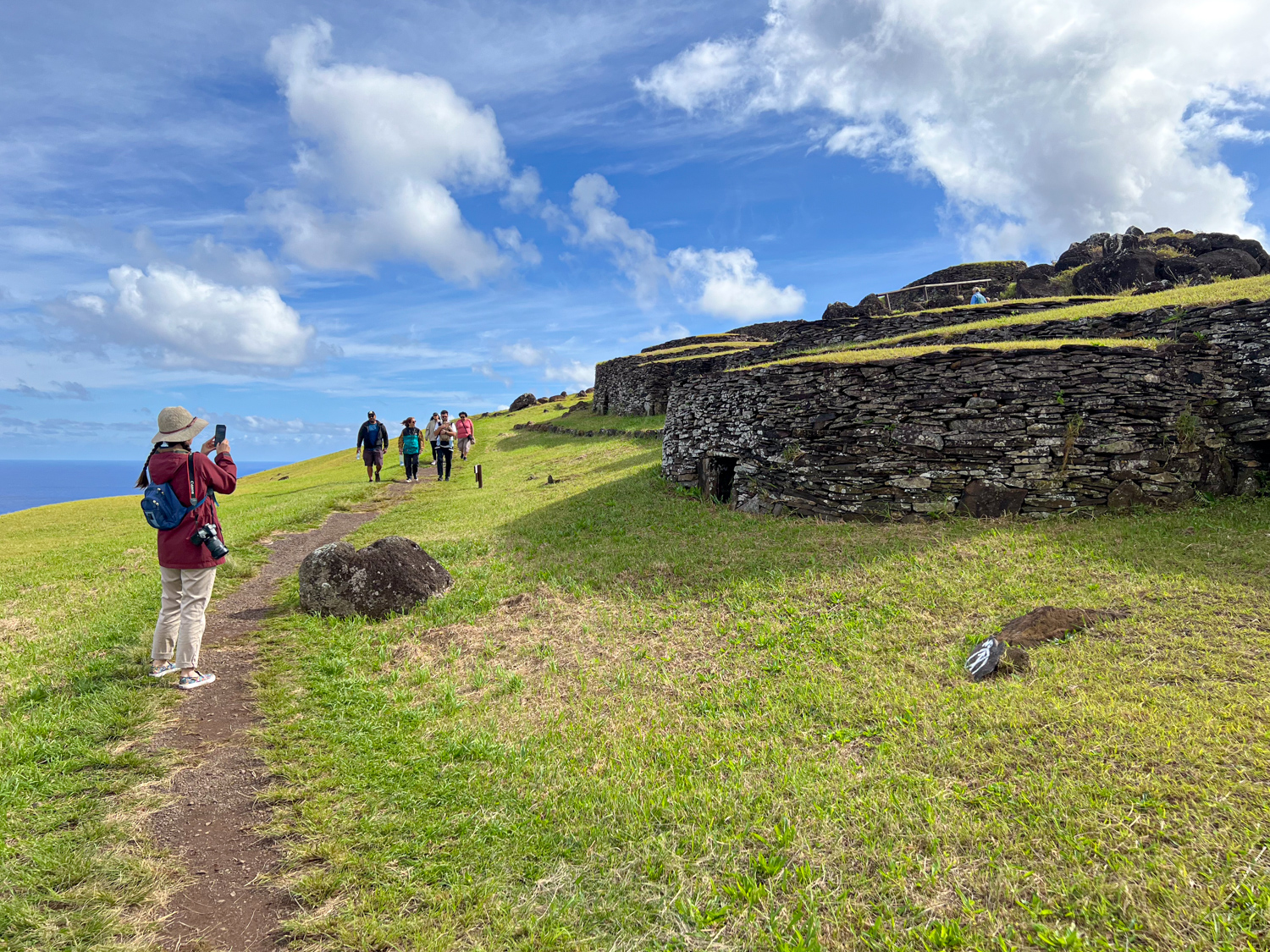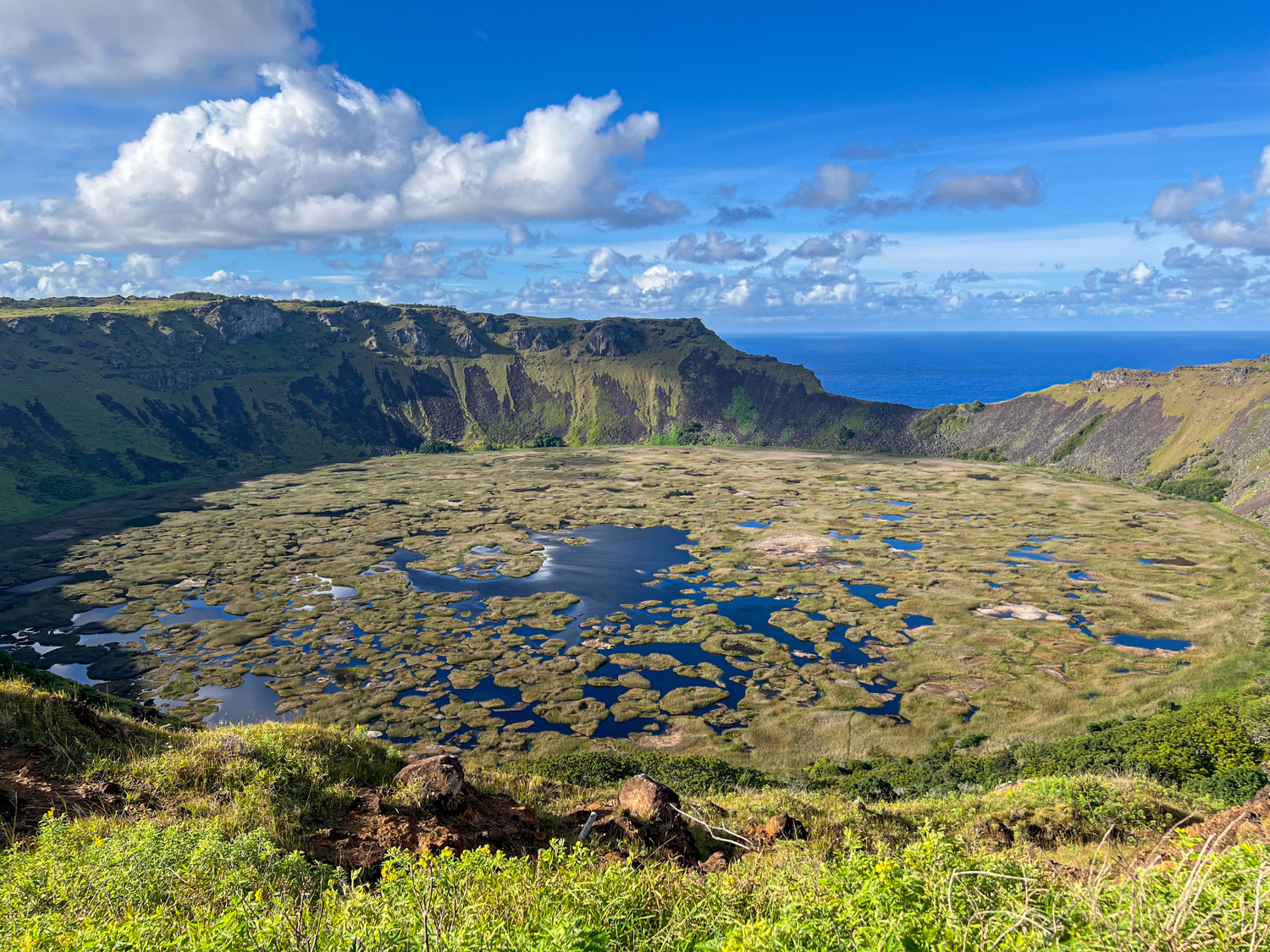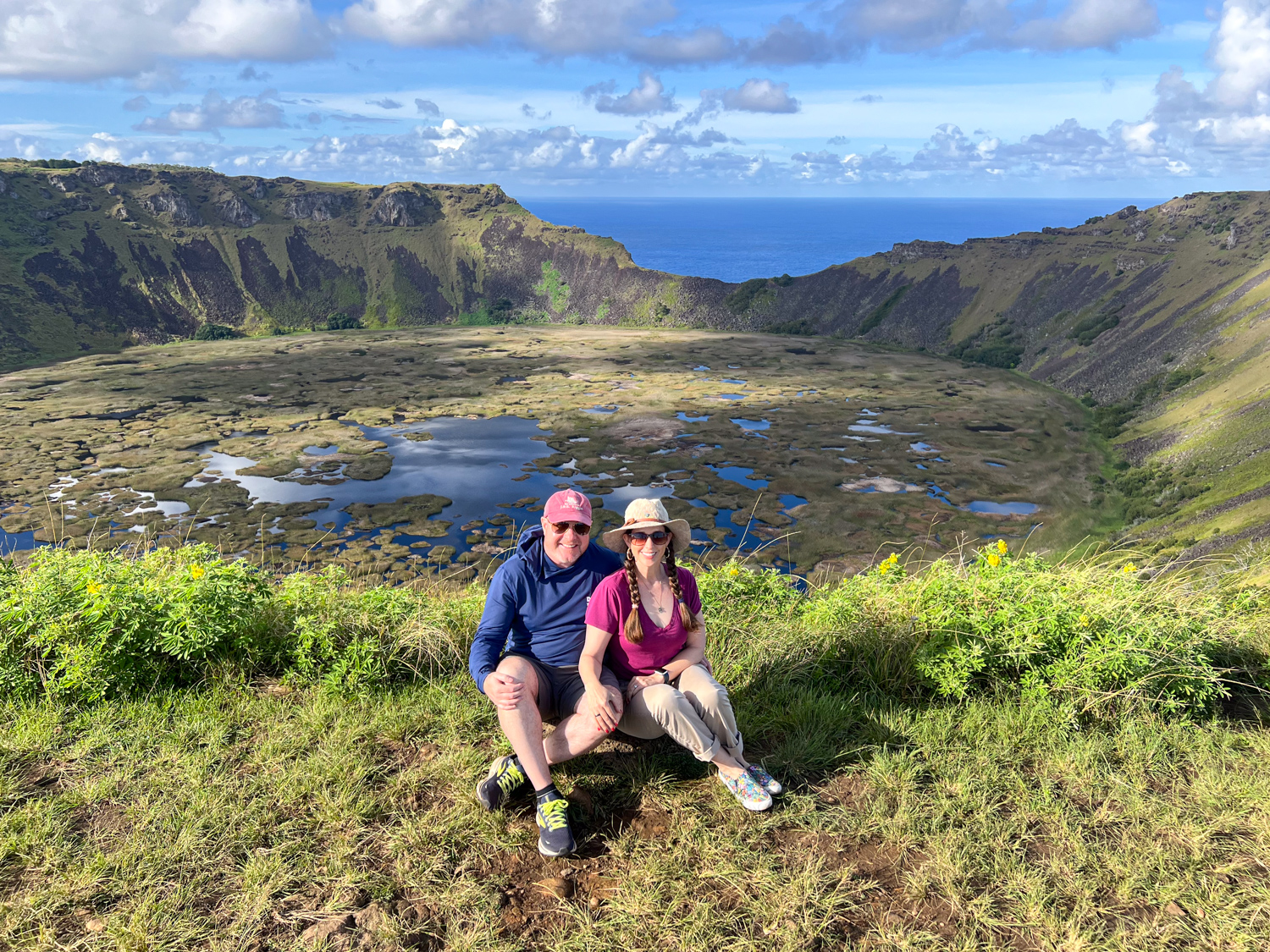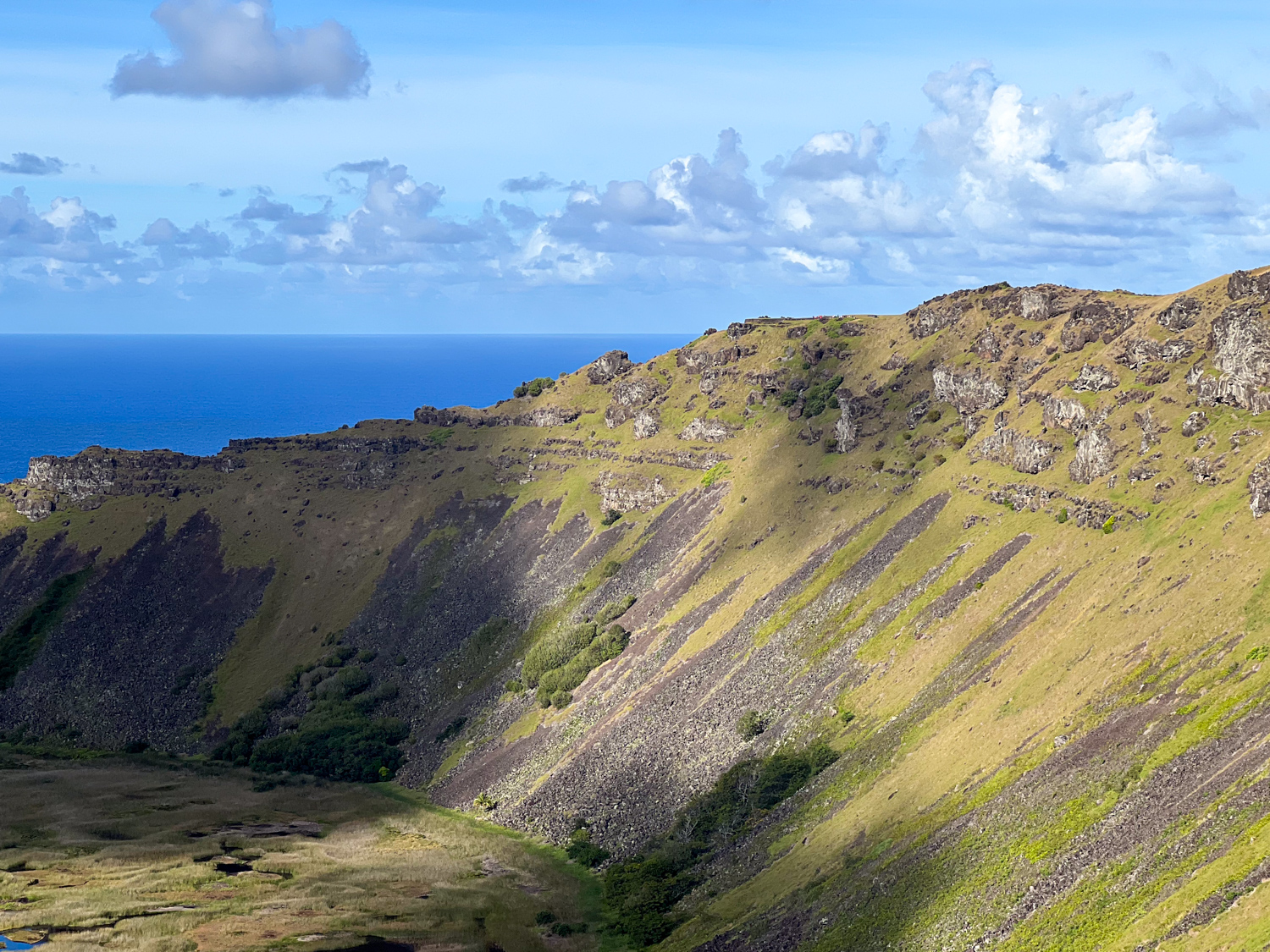Easter Island is famous for its moai, which the Rapa Nui people carved from the volcanic rock of the Rano Raraku crater. However, visitors to Easter Island will also discover an equally captivating story at Orongo, a ceremonial village on the southern slopes of another volcano, Rano Kau.
Built on the crater’s edge, above towering cliffs, the stone village offered members of the Birdman cult (tangata manu) a commanding 360-degree view of the crater lake and Pacific Ocean. Three islets visible from Orongo played a prominent role in the cult’s most important ritual.

Orongo village is in Rapa Nui National Park, a UNESCO World Heritage Site. Therefore, all visitors must purchase and carry their park pass to enter. You must have a licensed guide, and like Rano Raraku, you may only visit Orongo once during your stay on Easter Island.
Here, I’ll share our experience visiting Rano Kau and Orongo as part of a half-day guided tour. You’ll learn about the origins of Orongo, the Birdman cult, and their annual death-defying competitions to choose new leaders. You’ll also discover why the cult and its rituals disappeared from Easter Island.
Rano Kau Volcano


Let’s begin with the 1,063-foot-tall Rano Kau Volcano, situated along the southern coast of Easter Island—the youngest rocks at this extinct volcano date from about 150,000 to 210,000 years ago.
Visitors can marvel at the freshwater lake and marsh in the caldera and snap epic photos from a lookout point along the road to Orongo’s visitor center. At the southernmost edge of the volcano, you can see how the Pacific Ocean is slowly eating away at the crater, causing the walls to crumble.


From the lookout and in the photo below, you can pinpoint the village of Orongo, where the horizon over the ocean meets the crater’s rim. Rano Kau’s interior slopes range from 45 to 65 degrees.


The crater contains obsidian, a hard black volcanic glass used by the Rapa Nui stoneworkers to carve the moai statues at Rano Raraku Volcano at the northeastern end of Easter Island.
In addition to seeing the crater, the lookout at Rano Kau offers an excellent view north of Mataveri International Airport, the town of Hanga Roa, and Mount Terevaka, Easter Island’s tallest volcano (1,664 feet).
You do not need a guide to see the crater. You can drive up if you have a rental car on Easter Island….
Click Here to Read the Full Original Article at GoBackpacking…